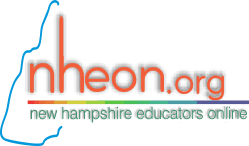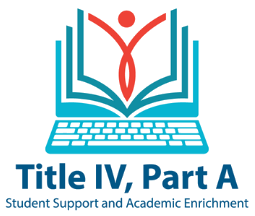The Title IV, Part A Student Support and Academic Enrichment (SSAE) program is intended to help increase the capacity of State educational agencies (SEAs), local educational agencies (LEAs), schools, and local communities to:
- provide all students with access to a well-rounded education,
- improve school conditions for student learning, and
- improve the use of technology in order to improve the academic achievement and digital literacy of all students.
Review this slide deck for a basic overview of the Title IV-A Program and Program Development Process.
Check Your Allocation
Your district allocations can be found on the chart below.
Some Advice on Allowability
Federal guidance on allowability asks that these four steps be considered:
- Determine if the proposed activity was informed by an assessment of need (a comprehensive needs assessment is required for LEAs with an allocation of at least $30,000), stakeholder engagement, and prioritization of schools.
- Confirm whether the proposed activity is consistent with the purposes of at least one of the three content areas in the Title IV-A program (well-rounded education in ESEA Section 4107, safe and healthy students in ESEA Section 4108, or the effective use of technology in ESEA Section 4109).
- Assuming that the activity is consistent with the purposes of one of the three content areas, as applicable, determine the allowability of costs in accordance with the cost principles in the Uniform Administrative Requirements, Cost Principles, and Audit Requirements for Federal Awards (Uniform Guidance) of 2 CFR Part 200, Subpart E. Specifically, the cost of an activity is allowable under the Title IV-A program if it is reasonable and necessary for performance of the grant (i.e., it is of a type generally recognized as ordinary and necessary for operation of the grant) and allocable to the grant (i.e., it is chargeable to the grant award in proportion to the benefits received by the grant award as a result of the cost). Also, because Section 4110 of the ESEA prohibits supplanting, the proposed use of funds for the activity must supplement, and not supplant, other state or local funds that would otherwise be used to pay for the allowable activity.
- Finally, ensure that the activity is not one of the prohibited activities in ESEA Section 4001(b) or Section 8526, as amended by the ESSA.
Elementary and Secondary Education Act
Uniform Federal Grant Guidance
Allowable uses of funds under each of the three content areas may include (but are not limited to):
- Direct services and supplemental programs for students;
- Professional development for teachers and administrators, necessary to carry out the identified supplemental programs and services;
- Salaries of personnel necessary to carry out the identified supplemental programs and services; and
- Supplemental educational resources and equipment necessary to carry out the identified supplemental programs and services.
Local Educational Agency (LEA) Title IV-A Program Facilitator's Guide
Determine Your Needs
Grant Allocation is between $10,000 and $29,999 --> You do not have to complete a comprehensive Needs Assessment, but you are responsible for assessing your needs through some kind of assessment. All activities in Title IV-A programs must be based on a need for supplemental student support. The demonstrated needs should be the basis for your priorities, proposed outcomes, and program activities. Your needs assessment and results should be uploaded as part of the Consolidated Application process.
Grant Allocation is greater or equal to $30,000 --> You must complete a comprehensive Needs Assessment. Comprehensive in the Title IV-A program means that needs are assessed in each of the three Title IV-A program areas. The comprehensive needs assessment results are good for three years. The demonstrated needs should be the basis for your priorities, proposed outcomes, and program activities. Your needs assessment and results should be uploaded as part of the Consolidated Application process.
Consolidated Application
In order to be eligible for Title IV-A funding your LEA must have been awarded and used Title I-A funding in the previous year; completed a needs assessment (comprehensive or otherwise) to determine the needs for supplemental support your students have; and completed the Title IV-A portion of the Consolidated application. The Title IV-A Application consists of five questions:
- A description of the activities and programming that the local educational agency, or consortium of such agencies, will carry out under this subpart, including a description of any partnership with an institution of higher education, business, nonprofit organization, community-based organization, or other public or private entity with a demonstrated record of success in implementing activities under this subpart.
- If applicable, how funds will be used for activities related to supporting well-rounded education under section 4107.
- If applicable, how funds will be used for activities related to supporting safe and healthy students under section 4108.
- If applicable, how funds will be used for activities related to supporting the effective use of technology in schools under section 4109.
- Describe the program objectives and intended outcomes for activities under this subpart, and how the local educational agency, or consortium of such agencies, will periodically evaluate the effectiveness of the activities carried out under this section based on such objectives and outcomes.
You will also have to complete and upload your needs assessment and the Title IV-A section of the budget template, providing a preliminary budget for how you will use your Title IV-A allocation.
Title IV-A Program Development Process
Your Stakeholder Team should drive the development of your entire Title IV-A program. Whether you focus on one need or several, your Title IV-A Stakeholder Team should conduct a needs assessment, identify and prioritize which of your needs they want to address through Title IV-A supplemental student programs. Then, look at development of your program as a backward design process.
- Priority - The most important needs for supplemental support of your most at risk students, or student groups, as determined through consultation with your Stakeholder Team.
First, you start with your determined needs.
The Title IV-A Stakeholder Team discusses the student needs, separates out those that fit into one or more of the Title IV-A categories, prioritizes them, so that the most important ones are considered first.
Then, you decide what outcomes, or final result, would help address or meet those determined needs. Once you determine the anticipated outcome that addresses the need, then explore what you could do to create that outcome. Develop a measurement tool that you could use to determine whether you have meet your outcome.
- Activity - A supplemental student centered program designed to provide the supplemental support necessary for the targeted group of students to be able to meet the need and achieve the desired outcomes.
Fully develop the activities so that it is clear what the program is, when it will operate, and who it will serve. These paramneters will allow you to collect the data that demonstrates that your activity produced the outcome.
Grant reviewers must ensure that LEAs clearly identify Performance Measurements and Outcomes based upon the following definitions and guidelines:
- Performance Measurement - a performance measurement is a tool that can be used to collect data on a particular objective. Data collection should be designed to demonstrate that your activity produced your outcomes. So, while your data collection can include summative assessments for student achievement, you also need to collect data on the activity itself to have evidence that the activity impacted students, and was responsible for the outcomes.
Examples of performance measurements may include, but are not limited to:
-
NH State Assessment
- NAEP; NWEA; AIMSWEB
- Behavior tracking system
- Attendance tracking system
- Grades and/or report cards
- Student participation and/or engagement records
- Student and/or Teacher Surveys
- Student work and/or Teacher lessons
- Outcome - An outcome is the overall set of measurable objectives that you anticipate students will achieve after they receive the supplemental support the activity is designed to provide for them.
Examples of outcomes may include:
- 15% of the 5th graders tested during an academic year showed progress on the NH State Assessment in mathematics.
- High school dropout rates decreased by 28% over a two-year period.
- Surveys of family members showed a 31% increase in feelings of positive engagement with the school district as a result of family literacy nights.
Then, figure out how the budget necessary to successfully implement the activity in order to maximize your success, to the best of your ability. All budgeted items should have an intended use in the program and that use should be described in the Activity section.
It's best to develop your entire Title IV-A Program first, and then enter it into the grants management system as an entire program. This makes it easier to check the budget and for reviewers to assess and approve your program. This is especially true if your allocation is $30,000 or more where you have to use all three funding categories in your program. In order to best coordinate your program and budget in a meaningful way, it is best to plan it all out first, down to the budget for each activity. Then, add it into the grants management system.
Evidence Based Practices
The US Department of Education along with the NH Department of Education strongly encourages LEAs to always use evidence based practices for their activities. Title IV-A programs should be evidence-based. However, the program requires evidence-based practices for activities under the Safe and Healthy Schools content area.
Supporting Your Activity with Evidence
When using evidence to support your programs in the GMS written narratives, please remember to provide a written statement that explains how the documented evidence in your cited article provides evidence that the program, as you intent to use it, will be successful for your student population. Make sure that the cited evidence is recent, appropriate for your activity as you intend to run it, and supports the objectives of your activity.
There are resources available for you in the Evidence Based Practices subfolder of the Toolkit Documents Folder.
What Works Clearinghouse
The What Works Clearinghouse (WWC) is a central and trusted source of scientific evidence on education programs, products, practices, and policies. WWC reviews the research, determines which studies meet rigorous standards, and summarizes the findings. They focus on high-quality research that determines what works in education. Not all education research is equal. WWC can help identify well-designed studies, trustworthy research, and meaningful findings that inform decisions and improve student outcomes.
Use the What Works Clearinghouse resources.
Develop Your Activities
Grant Allocation is between $10,000 and $29,999 --> You can use a single category, or any combination, for your Title IV-A Program activities.
Grant Allocation is greater or equal to $30,000 --> You must use all three categories for your Title IV-A Program activities. Your budget must be distributed into those categories in the following way:
- At least 20% for Well Rounded Educational Opportunities.
- At least 20% for Safe and Healthy Students.
- Some amount dedicated to Effective Use of Technology. Not more than 15% of the Effective Use of Technology budget can be used to purchase hardware or software. Professional development activities are the main focus of this category.
Resources for each category can be found on these pages:
Note: The cost principles set out the basic guidelines to test the allowability of costs are outlined in Tests of Cost Allowability for Federal Grants. To be allowable under federal awards, costs must meet every one of the criteria. Reasonable people may have different concepts of what is a necessary cost. The "Prudent Person" Rule makes it clear that to be reasonable, a cost may not be more than a "prudent person" would spend in its nature and amount at the time of the decision.


